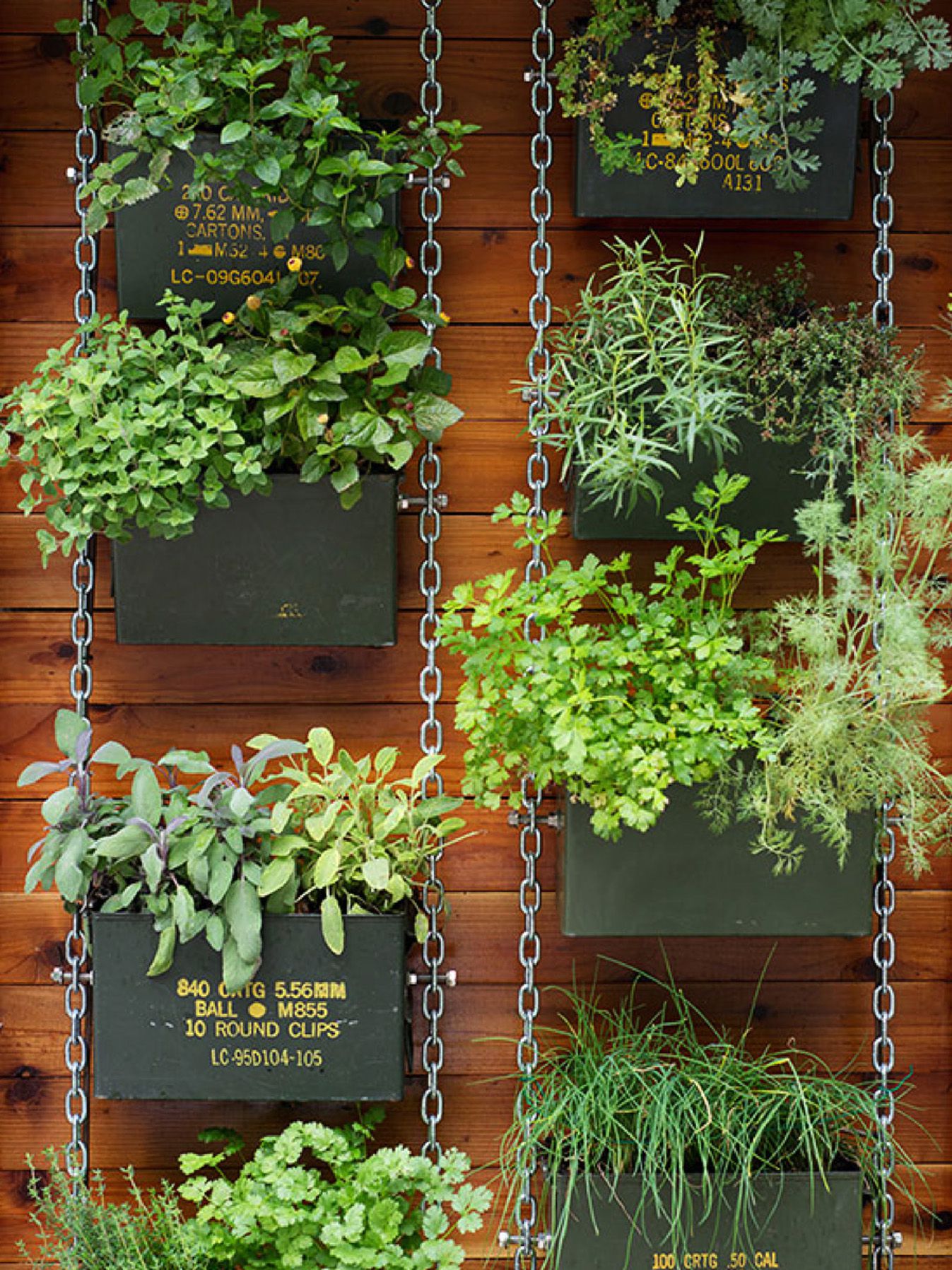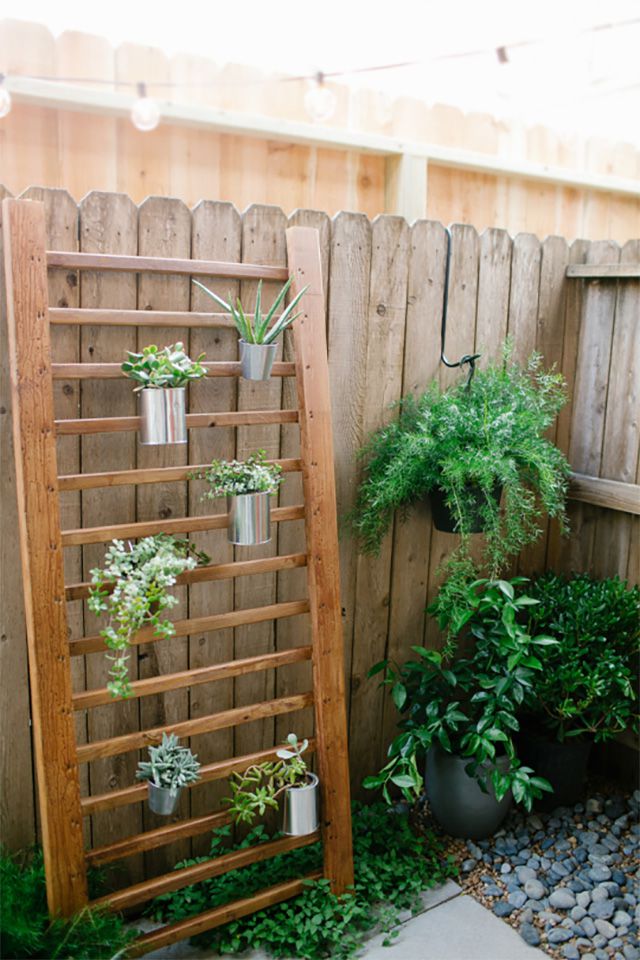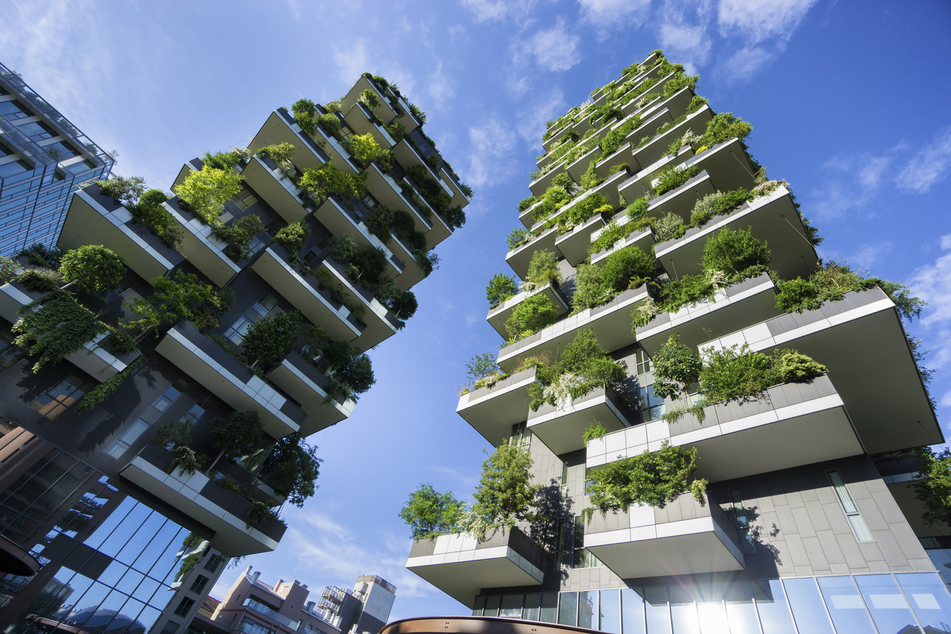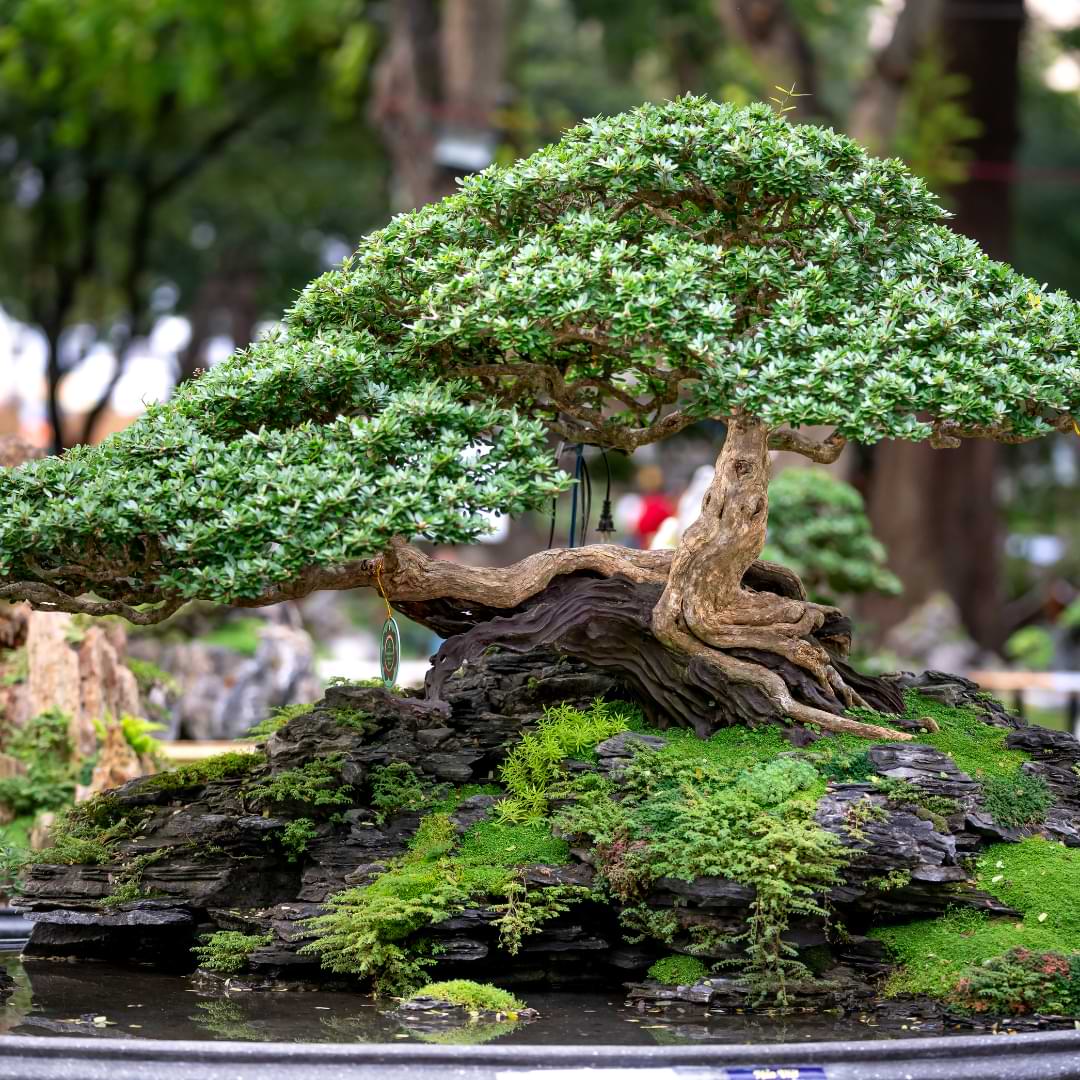Vertical gardening has become increasingly popular among gardening enthusiasts due to its space-saving benefits and aesthetic appeal. Whether you have a small balcony or a limited backyard, this article will provide you with ten essential tips to ensure a successful vertical garden. From choosing the right plants to maximizing sunlight exposure, these tips will help you create a green oasis in any vertical space. Get ready to transform your walls and fences into a vibrant and thriving garden that will leave your neighbors in awe.

This image is property of growinginthegarden.com.
Choosing the Right Plants
Consider the available space
When choosing plants for your vertical garden, it’s essential to consider the available space you have. Consider the height and width of the structure you will be using and choose plants that will fit within those dimensions. Be mindful of any nearby structures or plants that could obstruct the growth of your vertical garden.
Think about the lighting conditions
Different plants have different lighting requirements, so it’s important to consider the lighting conditions in the area where your vertical garden will be located. Some plants thrive in full sun, while others prefer shade or partial shade. Take note of the amount of sunlight the area receives throughout the day and choose plants that will thrive in that environment.
Evaluate the soil quality
The soil quality is crucial for the success of any garden, including vertical gardens. Evaluate the soil in the area where you plan to install your vertical garden. Is it sandy, loamy, or clayey? Knowing the soil type will help you choose plants that are well-suited for that particular soil condition. Consider adding organic matter or using soil amendments to improve the soil quality if necessary.
Research the water requirements
Understanding the water requirements of the plants you choose is vital for their survival. Some plants need more water than others, so it’s essential to select plants that have similar water requirements. This will ensure that all the plants in your vertical garden receive the appropriate amount of water. Consider the climate in your area as well, as it will impact the water needs of your plants.
Selecting the Proper Structure
Assess the stability of the structure
Before installing your vertical garden, it’s important to assess the stability of the structure you will be using. The structure should be able to support the weight of the plants, containers, and any additional elements such as trellises or frameworks. Make sure the structure is secure and properly anchored to prevent any accidents or damage.
Consider the weight-bearing capacity
Vertical gardens can become quite heavy, especially when fully grown and watered. Consider the weight-bearing capacity of the structure you choose to ensure it can safely support the weight of the plants. If needed, reinforce the structure or opt for a sturdier material that can handle the load.
Choose a material suitable for outdoor use
Since your vertical garden will be exposed to the elements, it’s important to choose a material that is suitable for outdoor use. Look for materials that are weather-resistant and can withstand the sun, wind, and rain without deteriorating or becoming damaged. Common materials used for vertical garden structures include wood, metal, and PVC.
Ensure proper drainage
Proper drainage is essential in a vertical garden to prevent waterlogged soil, which can lead to root rot and other plant diseases. Ensure that your chosen structure has adequate drainage holes or a system that allows excess water to escape. Additionally, consider using a well-draining soil mix to further improve drainage and prevent water buildup.
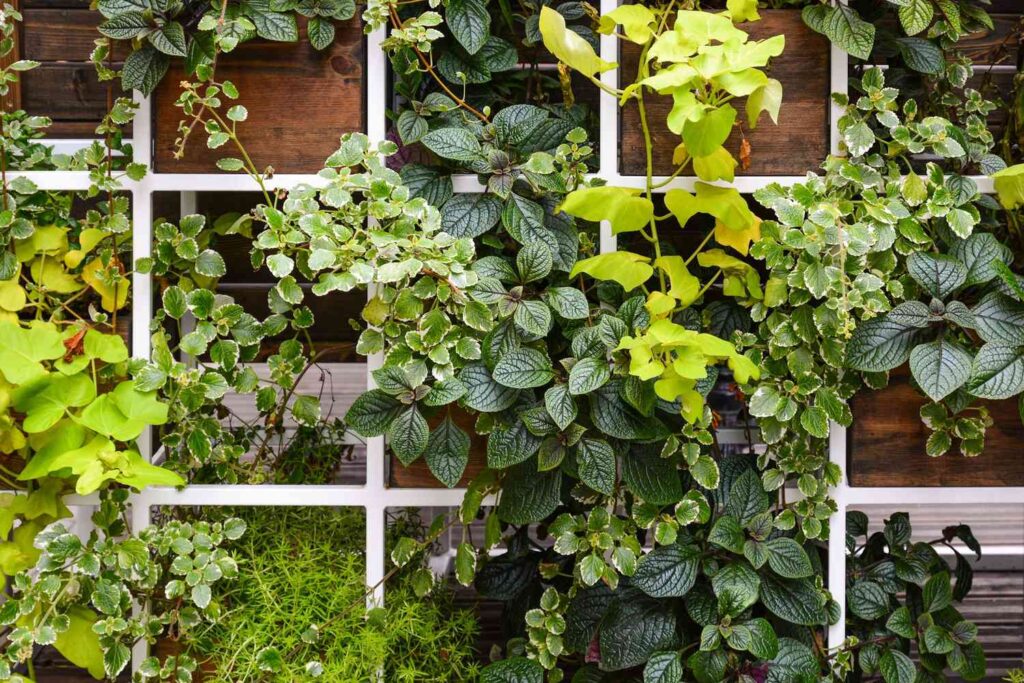
This image is property of www.marthastewart.com.
Creating a Support System
Install a sturdy trellis or framework
To support climbing or vining plants, it’s important to install a sturdy trellis or framework. This will provide the necessary support and structure for the plants to grow vertically. Choose a trellis or framework made of a durable material such as metal or bamboo and securely attach it to your vertical garden structure.
Use hooks or brackets to secure containers
If you are using containers to hold your plants, consider using hooks or brackets to secure them to the vertical garden structure. This will prevent the containers from shifting or falling, ensuring the safety and stability of your plants. Make sure the hooks or brackets are strong enough to support the weight of the containers when they are filled with soil and plants.
Consider utilizing a wall-mounted vertical system
If you have limited space or want to maximize the use of vertical surfaces, consider utilizing a wall-mounted vertical system. These systems allow you to attach plant pockets or containers directly to the wall, creating a stunning display of plants. Make sure the wall is sturdy enough to support the weight of the plants and containers.
Ensure adequate support for heavy plants
Some plants can grow quite large and heavy, so it’s important to ensure they have adequate support. Use plant stakes or cages to support these plants and prevent them from toppling over. It’s important to provide support early on in the plant’s growth to prevent any damage or stress to the plant as it grows.
Preparing the Soil
Loosen compacted soil
Before planting your vertical garden, it’s important to loosen compacted soil to allow for better root penetration and drainage. Use a garden fork or a tiller to break up any compacted areas and ensure that the soil is loose and friable. This will create an optimal environment for plant growth and prevent water from pooling around the roots.
Add organic matter for improved drainage
Incorporating organic matter into the soil can greatly improve drainage and nutrient retention. Mix compost, well-rotted manure, or other organic matter into the soil before planting. This will help break up heavy soils and improve overall soil structure. Organic matter also provides essential nutrients for plant growth, promoting healthy and vigorous plants.
Test and adjust the pH level
The pH level of the soil can greatly affect plant growth and nutrient availability. Test the pH level of your soil using a soil testing kit and adjust it if necessary. Most plants prefer a slightly acidic to neutral pH level, around 6 to 7. If your soil is too acidic, add lime to raise the pH, or if it’s too alkaline, add sulfur or peat moss to lower the pH.
Provide essential nutrients through fertilizer
Vertical gardens, like any other garden, require a sufficient supply of nutrients for plant growth. Fertilize your vertical garden regularly to provide essential nutrients that may be lacking in the soil. Choose a balanced fertilizer or one specifically formulated for the types of plants you are growing. Follow the manufacturer’s instructions for application rates and frequency.
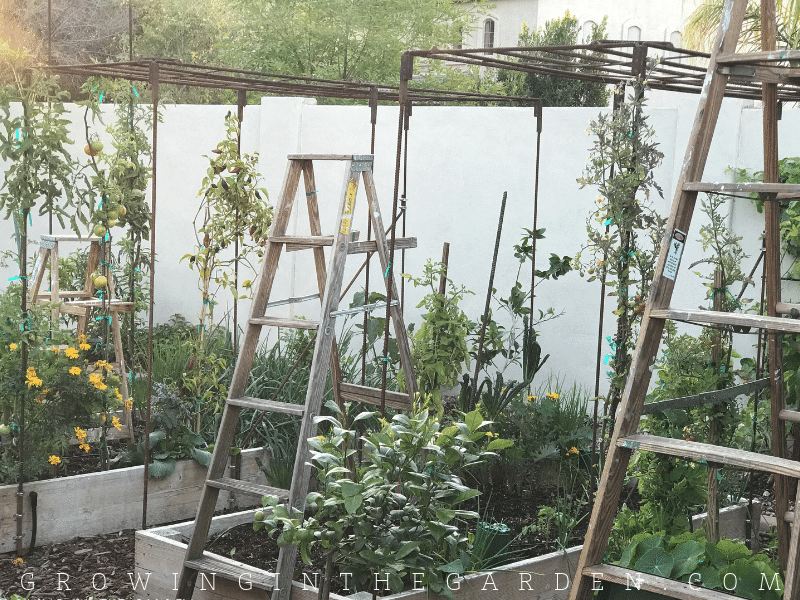
This image is property of growinginthegarden.com.
Implementing Proper Watering Techniques
Water consistently and regularly
Consistent and regular watering is crucial for the success of your vertical garden. Check the moisture level of the soil frequently and water as needed to keep the soil evenly moist. Avoid allowing the soil to dry out completely, as this can stress the plants. A consistent watering schedule will help promote healthy root growth and ensure that your plants thrive.
Avoid overwatering or underwatering
Finding the right balance when it comes to watering your vertical garden is key. Overwatering can lead to root rot and other diseases, while underwatering can result in stunted and unhealthy plants. Avoid these issues by monitoring the moisture level of the soil and adjusting your watering schedule accordingly.
Consider using a drip irrigation system
For large vertical gardens or if you have a busy schedule, a drip irrigation system can be a convenient way to water your plants. Drip irrigation systems deliver water slowly and directly to the roots, minimizing water waste and ensuring that plants receive a consistent water supply. Install drip emitters or soaker hoses throughout your vertical garden for efficient watering.
Monitor moisture levels for different plant types
Different plants have different moisture requirements, so it’s important to monitor the moisture levels of each plant in your vertical garden. Some plants prefer drier conditions, while others thrive in moist soil. Group plants with similar moisture needs together to ensure that they receive appropriate watering. Regularly check the soil moisture to prevent over or underwatering.
Maximizing Sunlight Exposure
Position the structure in a sunny location
To maximize sunlight exposure for your vertical garden, position the structure in a sunny location. Most plants require at least six hours of direct sunlight each day to thrive. Observe the area throughout the day and choose a spot that receives ample sunlight. Keep in mind any potential shading from nearby structures or trees.
Utilize reflective surfaces or mirrors
If your vertical garden is located in a shaded area, you can maximize sunlight exposure by utilizing reflective surfaces or mirrors. Place reflective materials, such as aluminum foil or white-painted surfaces, strategically around your vertical garden to bounce sunlight onto the plants. This can help supplement the available sunlight and promote healthy plant growth.
Rotate plants to ensure equal sun exposure
To ensure equal sun exposure for all your plants, consider rotating them regularly. Some plants may receive more sunlight than others due to their position in the vertical garden. By rotating the plants periodically, each plant will have a chance to receive equal amounts of sunlight, promoting uniform growth and preventing any plants from becoming too leggy or weak.
Provide shade for sun-sensitive plants
Not all plants thrive in direct sunlight, especially those that are sun-sensitive. If you plan to grow sun-sensitive plants in your vertical garden, provide them with some shade to protect them from the harsh sun. This can be done by strategically positioning taller plants or incorporating shade cloth or outdoor umbrellas to provide filtered sunlight.

This image is property of growinginthegarden.com.
Maintaining Pest and Disease Control
Regularly inspect plants for signs of pests
Pests can wreak havoc on your vertical garden if left unchecked, so it’s important to regularly inspect your plants for signs of pest infestation. Look for chewed leaves, holes, sticky residue, or any unusual growths. Identify the pests causing the damage and take appropriate measures to control and eradicate them before they can cause significant damage to your plants.
Utilize natural pest deterrents
When it comes to pest control in your vertical garden, consider utilizing natural pest deterrents. There are many plants that naturally repel pests, such as marigolds, basil, and lavender. Intercropping these plants with your main plants can help deter pests. Additionally, you can use organic pest control methods such as neem oil, insecticidal soaps, or companion planting to keep pests at bay.
Monitor and address any disease symptoms
Diseases can quickly spread among plants in a vertical garden, so it’s important to monitor your plants for any signs of disease. Look for discoloration, wilting, spots, or any other abnormal growth patterns. If you notice any disease symptoms, promptly remove the affected plants or treat them with suitable fungicides or other disease control measures to prevent the disease from spreading to healthy plants.
Practice good hygiene to prevent infestations
Maintaining good hygiene practices in your vertical garden is crucial for preventing pest and disease infestations. Remove any dead or decaying plant materials, as they can attract pests and harbor disease-causing pathogens. Clean your tools and equipment regularly to prevent the spread of pests and diseases. Regularly sanitize containers and ensure proper airflow around plants to minimize moisture and fungal problems.
Pruning and Training Plants
Remove dead or damaged foliage
To maintain the health and appearance of your vertical garden, regularly remove dead or damaged foliage from your plants. Dead leaves or branches can attract pests and diseases, and they also detract from the overall aesthetic of your garden. Use clean and sharp pruning shears to make clean cuts and prevent any damage to the remaining plant tissue.
Encourage lateral growth through pruning
Pruning can help promote lateral growth and a bushier appearance in your plants. Trim back the tips of your plants to encourage branching and the development of multiple stems. This will create a fuller and more lush vertical garden. However, be cautious not to overprune, as it may stress the plants and reduce their overall vigor.
Train climbing plants using ties or strings
Climbing plants require support and guidance to grow vertically. Train these plants by tying them to the trellis or framework using plant ties or strings. As the plants grow, regularly adjust the ties to prevent them from becoming too tight and cutting into the stems. This will help the climbing plants attach and grow upward, creating a beautiful display of foliage.
Regularly trim to maintain desired shape
To maintain the desired shape and size of your vertical garden, regularly trim your plants. Trim back any overgrowth or straggly branches to maintain a neat and tidy appearance. Be mindful of the growth habit of each plant when trimming to ensure that you’re not compromising the overall health and growth of the plant.
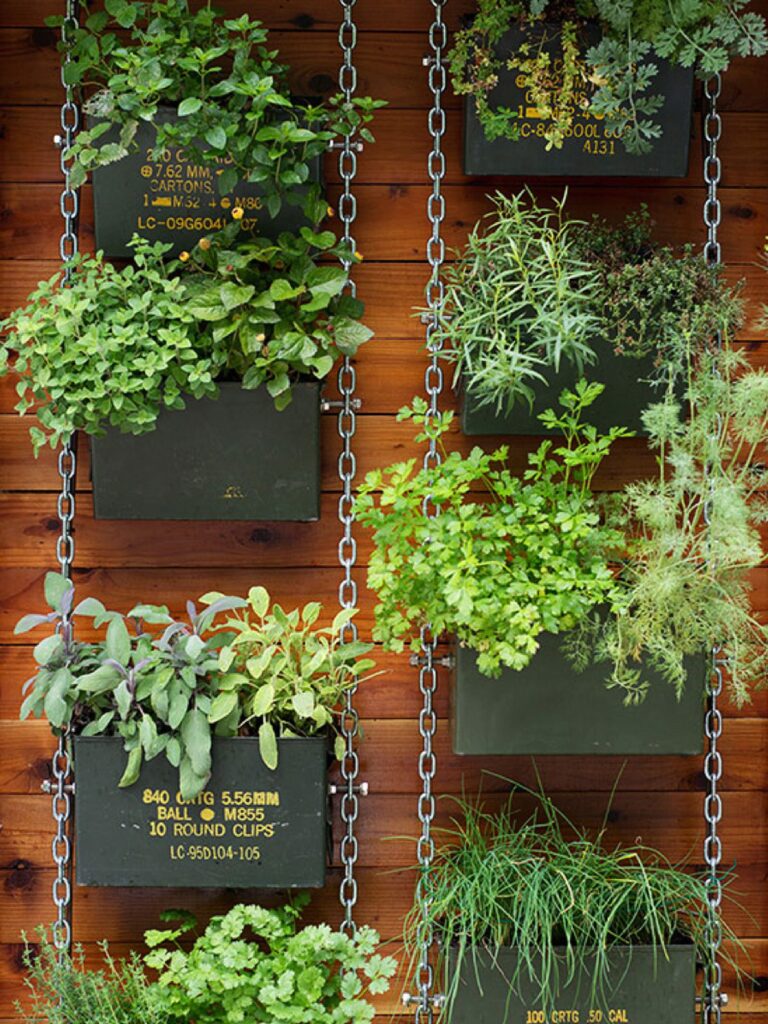
This image is property of www.bhg.com.
Monitoring and Adjusting Support Structures
Regularly check for stability and safety
The stability and safety of your support structures are vital to the longevity of your vertical garden. Regularly check the structure for any signs of weakness, such as wobbling or sagging. Ensure that all the components are securely fastened and that there are no loose or damaged parts. It’s better to address any issues promptly before they lead to accidents or damage.
Adjust supports as plants grow taller
As the plants in your vertical garden grow taller, it’s important to adjust the supports accordingly. The upward growth of the plants can put strain on the support structures, potentially causing them to shift or become unstable. Regularly check the height of your plants and adjust the supports to accommodate their growth, ensuring that they remain securely in place.
Reinforce weak areas to prevent collapse
If you notice any weak areas in your support structures, reinforce them promptly to prevent collapse. Add extra brackets or supports to areas that are experiencing additional stress or strain. Strengthen weak joints or connections with additional hardware or reinforcements. Taking proactive measures to reinforce weak areas will ensure the stability and safety of your vertical garden.
Replace or repair damaged support components
Any damaged or broken support components should be replaced or repaired as soon as possible. Weak or damaged supports can compromise the overall stability of your vertical garden and put your plants at risk. Replace any damaged or broken components with new ones of the same or stronger material. Repair any minor damages promptly to prevent them from escalating into more significant issues.
Harvesting and Enjoying Your Vertical Garden
Harvest crops at the appropriate maturity
One of the joys of vertical gardening is the opportunity to grow your own fresh produce. Harvest your crops at the appropriate maturity to enjoy the best flavor and yield. Each plant has different maturity times, so be mindful of the specific requirements for each crop. Harvesting at the right time ensures that you’re getting the most from your vertical garden.
Enjoy the beauty of blooming flowers
Vertical gardens are not just for growing vegetables; they can also be a stunning display of blooming flowers. Take the time to appreciate the beauty of your blooming flowers, as they add color and vibrancy to your vertical garden. Enjoy their fragrance and the sense of tranquility they bring to your outdoor space.
Share the harvest with friends and family
One of the joys of gardening is being able to share the fruits of your labor with loved ones. When you have an abundant harvest from your vertical garden, consider sharing the bounty with friends, family, and neighbors. It’s a wonderful way to spread joy and connect with others through the love of gardening and nature.
Experiment with new plant varieties
Vertical gardening offers endless possibilities and opportunities for experimentation. Don’t be afraid to try new plant varieties in your vertical garden. Explore different flavors, textures, and colors by planting herbs, edible flowers, or exotic vegetables. Push the boundaries of what you can grow vertically and discover the joy of cultivating unique and exciting plants in your own garden.
Vertical gardening is a rewarding and innovative way to maximize growing space and create a lush and vibrant garden. By following these essential tips, you can ensure the success of your vertical garden and enjoy the beauty and abundance it brings. So, get ready to choose the right plants, select the proper structure, create a support system, prepare the soil, implement proper watering techniques, maximize sunlight exposure, maintain pest and disease control, prune and train plants, monitor and adjust support structures, and finally, harvest and enjoy the fruits of your labor. Happy vertical gardening!

